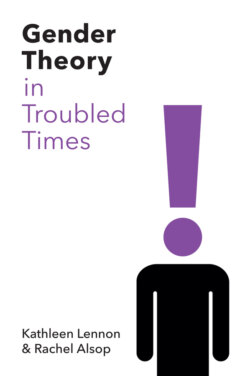Читать книгу Gender Theory in Troubled Times - Rachel Alsop - Страница 24
The case of sport
ОглавлениеAn assumed biological binary not only informs the treatment of intersexed bodies but also forces a spurious assumption of homogeneity within the categories of male and female themselves. As we have seen, the different markers of biological sex – genes (chromosomes), hormones, genitals, reproductive function, secondary sexual characteristics – do not always line up neatly together in the same way, even in cases where the label of intersex is not attributed. The difficulties here have become very public in relation to sport. Given that, currently, in many sports, the best men and the best women perform to different levels, professional sports have, in most cases, been divided into men and women’s competitions.4 This has been crucial in getting the contribution of women to sport better recognized – a funding and media battle that is, however, still ongoing. But it faces difficulties over the complexity of the biological data and their failure to yield a determinate account of maleness and femaleness.
At the time of the Cold War, sex tests were introduced for female athletes, initially consisting in asking them to undress. The test was visible body morphology. This moved to testing by hormones and then by chromosomes. But there have been anomalies. Someone who later gave birth was excluded from the women’s competition. In 1985 the Spanish hurdler María José Martínez Patiño, to all appearances female, was excluded for having one X and one Y chromosome. In 2009 a storm broke out over Caster Semenya, a South African athlete who won the 800 metres women’s final at the world championships and was asked to take a test to prove she is a woman. To her horror, and with gross intrusion into private medical facts, the suggestion that she might not really be female was then broadcast around the world.5 There is no suspicion of cheating here. Semenya has been identified and brought up as a girl, and there is no suggestion that she has been taking additional hormones. The results of any tests she has taken have not been made publicly known, but she is now allowed to compete in certain women’s races only if she takes testosterone inhibiting drugs. Semenya’s challenge to this ruling was rejected in May 2019. There has, however, been a successful challenge by the Indian professional sprinter Dutee Chand to regulations excluding female athletes with naturally occurring high levels of testosterone (the hyperandrogenism rule). Chand was excluded for four years, told she ‘was not a girl’, and suffered mental upset and public humiliation before the rule was modified for some events in 2018 (Sen 2018). Both cases are ongoing as we write.
The difficulty here is the viewing of the hormone testosterone as essentially a male hormone, with the assumption that higher levels make someone more male than female. But from the nineteenth century it has been known that this is a flawed picture. Hormones are not sex exclusive. What is being found in these athletes is a naturally occurring variation in bodies that are in other respects recognized as female, just as the length of Usain Bolt’s legs and those of some basketball players is a naturally occurring variation. Katrina Karkazis raises the question ‘And what of testosterone and athleticism?’ and concludes that the answer is far from simple. Although giving testosterone can increase muscle mass and power, it does not seem to build a better athlete. ‘Labelling women “biological males” draws a dubious connection between sex, testosterone, and athleticism that relies on long-discarded ideas that men and women can have a “true sex”, that testosterone is a “male sex hormone”, and that testosterone is the key to superior athleticism. None of these are true, and it’s long overdue that people stop saying they are’ (Karkazis 2019).
The sports federations have become embroiled in controversy by treating binary sex difference as a biological matter to be fixed by experts, when there are so many diverse ways in which the distinct biological markers of sexual difference can be combined together. Vanessa Heggie points out:
there has never been scientific (or philosophical, or sociological) consensus that there are simply two human sexes, that they are easily (and objectively) distinguished, and that there is no overlap between the two groups. Nor have [scientists] agreed that all of us are ‘really’ one sex or the other even if bits of our bodies or our identities don’t entirely match that sex. You can examine someone’s genitals, their blood, their genes, their taste in movies, the length of their hair, and make a judgement, but none of these constitute a universal or objective test for sex, let alone for gender.
When groups, whether in sport or elsewhere, turn to scientific definitions to try to exclude some people from the category of ‘woman’, it is worth remembering this fact: scientists have never agreed on which kind of sex really matters to our identities, or to our right to call ourselves men, or women, or neither, or both. (Heggie 2015)
